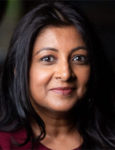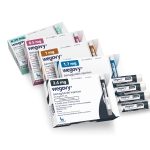
Eight months since the World Health Organization declared COVID-19 a pandemic, there are still many unknowns about the disease caused by the virus SARS-CoV-2, and journalists are continually looking for new resources.
New York Times science and global health reporter Apoorva Mandavilli recently offered lots of tips to reporters on where to look for experts, how to cultivate them and what to do when health officials change their official guidance on COVID-19, or even contradict themselves.
“In an evolving pandemic, things are bound to change and not every change is a sign of bad faith,” Mandavilli told the Journalism Institute at the National Press Club. “Before you jump to conclusions, really understand what has changed (the wayback machine is really helpful), whether it makes sense in terms of the evolving science, and clarify why it matters. The more context and transparency you can provide readers about what changed and why, the better.”
Mandavilli emphasized the importance of finding the right experts to talk about the differing aspects of COVID-19 – a big challenge because there are so many nuances with this disease. Not just any physician, infectious disease specialist or epidemiologist should be quoted as an expert in a story.
“Don’t ask an immunologist to comment on airborne transmission or a virologist to put a change in CDC policy into public health perspective,” Mandavilli advises. “The more careful you are, the easier it will be for sources to trust you, too.”
If someone is new to the COVID-19 beat, she suggests looking at this list of vetted science experts collated by Medium’s Elemental, for who can be trusted to separate truth from misinformation. The list specifies why the editors trust each scientist and spells out their area of expertise, which can be handy if someone is trying to quickly find an expert to comment. [See this recent AHCJ tip sheet on covering COVID-19 vaccines, which provides the contact info for many of the experts on the Elemental list.]
She also suggests reporters spend time looking through PubMed (a free search engine maintained by the U.S. National Library of Medicine and the National Institutes of Health), and bioRxive and medRxiv (both free online archives of unpublished research papers, operated by Cold Spring Harbor Laboratory) to find scientists to talk with about stories. [Note: Because research posted on bioRxive and medRxiv hasn’t been peer reviewed, AHCJ core topic leader Tara Haelle encourages reporters to be careful about how research on these sites is used by journalists.]
And lastly, Mandavilli urged journalists to be more careful than ever about the information they are reporting on and to question everything.
“We’re taught to do this anyway, but science journalists, especially, have been used to being able to take what at least some organizations (like the CDC) say as solid information,” she said. “That’s no longer the case. Extend your skepticism to everyone and everything.”
For more of this interview, see this “How I Did It” piece with Mandavilli.






